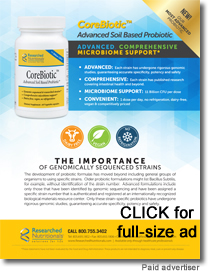|
Originally published in the Well Being Journal,
September/October 2016
Page 1, 2
Note: In this article, the terms "chronic scurvy," "heart disease," and "cardiovascular disease" (CVD) refer to the accumulation of damage, most commonly in the coronary arteries, that is associated with high blood pressure, plaque deposits, and the increased incidence of heart attacks. This condition is also known by several other terms, such as "coronary artery disease" (CAD), "atherosclerosis," "hardening of the arteries," and "coronary heart disease" (CHD).
Introduction
Linus Pauling, PhD, championed a nutritional treatment for CVD/chronic scurvy called Pauling Therapy. It is based on research into the relationship between CVD and vitamin C and was first publicly described in 1991. In the 25 years since, despite its exceptionally high success rate, this therapy has rarely been used by mainstream cardiologists.
This article discusses renaming the condition from CVD to "chronic scurvy," which would focus attention on the true location of the pathology and, ideally, lead many more people to use Pauling Therapy to treat CVD.
The History of Pauling Therapy
The earliest known public pronouncement of the Pauling Therapy was in 1991, when Linus Pauling and Mathias Rath, MD, examined a body of research and concluded that there was a connection between vitamin C and CVD. That connection was based upon the observation that CVD is, at its core, an accumulation of damage to the collagen and elastin fibers in the artery walls. Vitamin C is required for the creation of replacement collagen fibers, as discussed in Pauling and Rath's resulting 1992 paper. Pauling and Rath's paper concludes:
In this paper we present a unified theory of human CVD (cardiovascular disease). This disease is the direct consequence of the inability of man to synthesize ascorbate in combination with insufficient intake of ascorbate in the modern diet. Since ascorbate deficiency is the common cause of human CVD, ascorbate supplementation is the universal treatment for this disease. The available epidemiological and clinical evidence is reasonably convincing. Further clinical confirmation of this theory should lead to the abolition of CVD as a cause of human mortality for the present and future generations of mankind.1
 Such was the success of their treatment therapy that perhaps Pauling and Rath then dusted off their hands and thought to themselves, "Done with that disease." Unfortunately, the rest of the world has moved at a glacial pace in taking advantage of their breakthrough ideas. Such was the success of their treatment therapy that perhaps Pauling and Rath then dusted off their hands and thought to themselves, "Done with that disease." Unfortunately, the rest of the world has moved at a glacial pace in taking advantage of their breakthrough ideas.
Although Pauling and Rath's resulting treatment has yet to hit mainstream medicine, it has not fallen entirely on deaf ears. The small group of people who are confident to research their own medical challenges and make their own medical decisions have frequently discovered some version of Pauling Therapy and are routinely reversing their CVD/chronic scurvy.2 But what about the vast majority of people who depend upon conventional medicine for their heart disease treatment choices? When will they be advised by their cardiologists that their heart disease can be reversed in a matter of months instead of being mired in a managed disease for the rest of their lives? What follows is an attempt to point out what has gone wrong and how it might be fixed.
The Conventional Viewpoint
The conventional viewpoint for preventing and treating CVD is to focus the discussion on the plaque deposit-blood clot combination.
A person's perspective of plaque deposits may be theoretical—as in the case of a relative or friend—or it may be more visceral, as in the case of a medical professional or coroner. Once an individual sees the big, ugly plaque deposits that certainly played a large part in killing a friend or family member or patient, their attention is held. Upon examination, this deadly glob, which looks as far away from a healthy artery as possible, invokes a sense of repulsion. It then dominates the person's emotions and thoughts about treatment and prevention.
Doctors are often asked to look at a system that has failed, analyze what went wrong, and propose a solution. In the case of death from heart attack in a patient in whom a plaque deposit suddenly became 100 percent blockage, doctors instinctively look at the plaque deposits and then work backward. Almost all medical proposals refer to the deadly plaque deposit. Medical professionals discuss the fatty nature of the plaque, the cholesterol, the calcium buildup, the blood clot, how to remove these problems, and how to prevent them.
The medical community has been proposing solutions for heart attacks caused by these plaque-blood clot combinations for decades, but heart disease still remains the number one disease cause of death.3
A Holistic Viewpoint
The holistic approach for treating CVD is quite different. To understand how the nutritional treatment of chronic scurvy works, the plaque deposits must be viewed from a different perspective. If the disease itself is to be found, the area underneath the plaque deposits must be examined. It is there that weak and damaged artery walls are found. Patients who have plaque deposits in the coronary arteries have chronic scurvy.
Scurvy is essentially a bleeding disease. Chronic scurvy differs from "normal" scurvy only in degree and the body's response. Both have at their core the inability to repair and replace collagen fibers in the vascular tissue, which leads to the resulting failure of that vascular tissue to contain the blood. The difference between the two conditions of scurvy appears because whereas scurvy results from several months of near-zero levels of vitamin C, chronic scurvy results from years, if not decades, of inadequate levels of vitamin C, which allows the body a chance to mount a secondary defense.
Relevant comments from the Pauling and Rath paper state:
The invariable morphological consequences of chronic ascorbate deficiency in the vascular wall are the loosening of the connective tissue and the loss of the endothelial barrier function. Thus human CVD is a form of pre-scurvy.
The multitude of pathomechanisms that lead to the clinical manifestation of CVD are primarily defense mechanisms aiming at the stabilization of the vascular wall [emphasis added]. After the loss of endogenous ascorbate production during the evolution of man these defense mechanisms became life-saving. They counteracted the fatal consequences of scurvy and particularly of blood loss through the scorbutic vascular wall.4
The arteries are a high-pressure system compared to the veins, and a primary purpose of the artery is to contain the body's blood. If enough damage accumulates in one area of an artery, it may become weak enough that breakthrough bleeding occurs.
Whenever there is damage to artery walls, the first order of business is to repair the damage. These repairs require a collection of nutrients. But what happens if one or more of those nutrients are absent or in short supply? Repairs get backlogged, and the arteries get weaker.
When the arteries get to the point where breakthrough bleeding becomes a danger and the required repairs cannot be made due to nutrient deficiencies, the body has a "Plan B." It builds up a layer of material on the inside of the artery wall to protect the damaged artery wall against the force of the blood pressure. This, of course, is plaque deposits but could be called "nature's perfect Band-Aid." This phrase can be used to remind people that the plaque deposits are not pathological but instead are an adaptive response to weakened artery walls. The body purposely develops plaque deposits, and they are saving the patient's life by preventing the possibility of breakthrough bleeding.
A quote from the Pauling and Rath paper shows that this idea was proposed 25 years ago:
The genetic countermeasures are characterized by an evolutionary advantage of genetic features and include inherited disorders that are associated with atherosclerosis and CVD. With sufficient ascorbate supply these disorders stay latent. In ascorbate deficiency, however, they become unmasked, leading to an increased deposition of plasma constituents in the vascular wall and other mechanisms that thicken the vascular wall. This thickening of the vascular wall is a defense measure compensating for the impaired vascular wall that had become destabilized by ascorbate deficiency.5
The positive resolution of this scenario involves making sure that the nutrients required to catch up on the backlog of vascular tissue repairs are in abundant supply. When these nutrients are adequately supplied and the arteries are repaired (thus removing the reason for the plaque deposits), plaque deposits gradually disappear on their own.
Treating chronic scurvy nutritionally, because it directly addresses the cause, almost always works.6 This is why, in this author's clinic, there is a saying that heart disease is easier to treat than low-back pain.
Why Name This Disease "Chronic Scurvy"
The following is a discussion of two different approaches to address CVD/scurvy and how terminology makes a difference in the prescribed treatment.
Let's look at an example of a patient who consults with a holistic, nutritionally oriented physician. The doctor names the patient's disease "atherosclerosis," which describes the complex development of the plaque deposits in a major artery. The holistic doctor and the patient discuss a nutritional treatment in terms of how it would heal and remove the plaque deposits. When the patient leaves the consultation, his attention is focused on the plaque deposits. The patient then often returns to his cardiologist and asks, "How do I get rid of my plaque deposits?" Most of the time, the cardiologist will steer the patient into conventional treatment because conventional treatment appears to be designed to fight those "deadly plaque deposits." These patients will manage their chronic disease for the rest of their lives.
In a second example, a patient consults with a holistic, nutritionally oriented health care professional. This doctor and the patient discuss the patient's condition using the term "chronic scurvy." It is made clear to the patient that this is a disease of weakened connective tissue in the arteries, and the discussion centers around which nutrients are required to repair connective tissue. When the patient leaves the consultation, her focus is on treating chronic scurvy by nutritionally facilitating repairs to the artery walls.
The patient then wants to discuss this treatment recommendation further with her cardiologist. She asks her cardiologist, "How do I treat my scurvy?" Almost everyone who has grown up in the United States learned in grammar school that European explorers frequently died from scurvy when they were on long voyages and that scurvy was later determined to be caused by a vitamin C deficiency. So, the discussion in the doctor's office starts with vitamin C. Looking further into the disease, the patient will learn that scurvy is a connective tissue weakness that results in internal bleeding. Other nutrients to support collagen and connective tissue production may be added to the treatment.
It is worth noting that the nutritional protocols outlined by the two holistic doctors are probably almost identical, and both would work to reverse the disease. The difference is that naming the disease "scurvy" rather than "atherosclerosis" keeps the focus on the actual pathology in the artery walls. In this way, the treatment focus stays on the integrity of the arteries and does not wander back to the plaque deposits.
Page 1, 2
|
![]()
![]()
![]()
![]()





